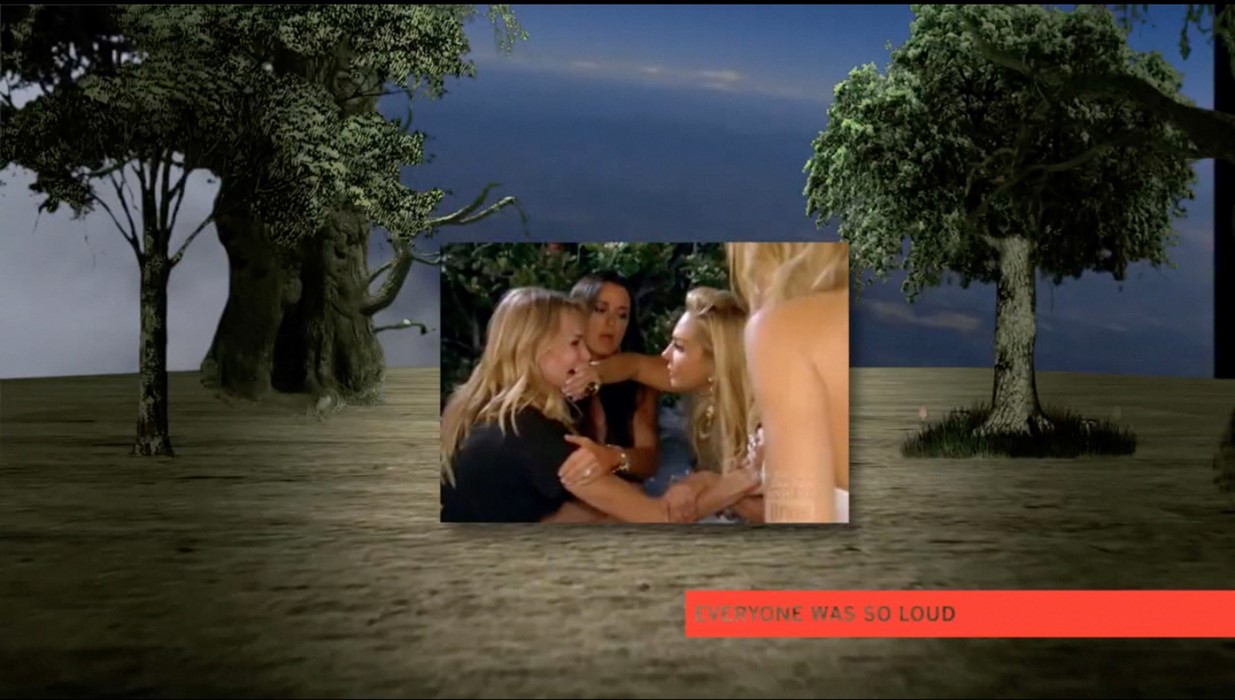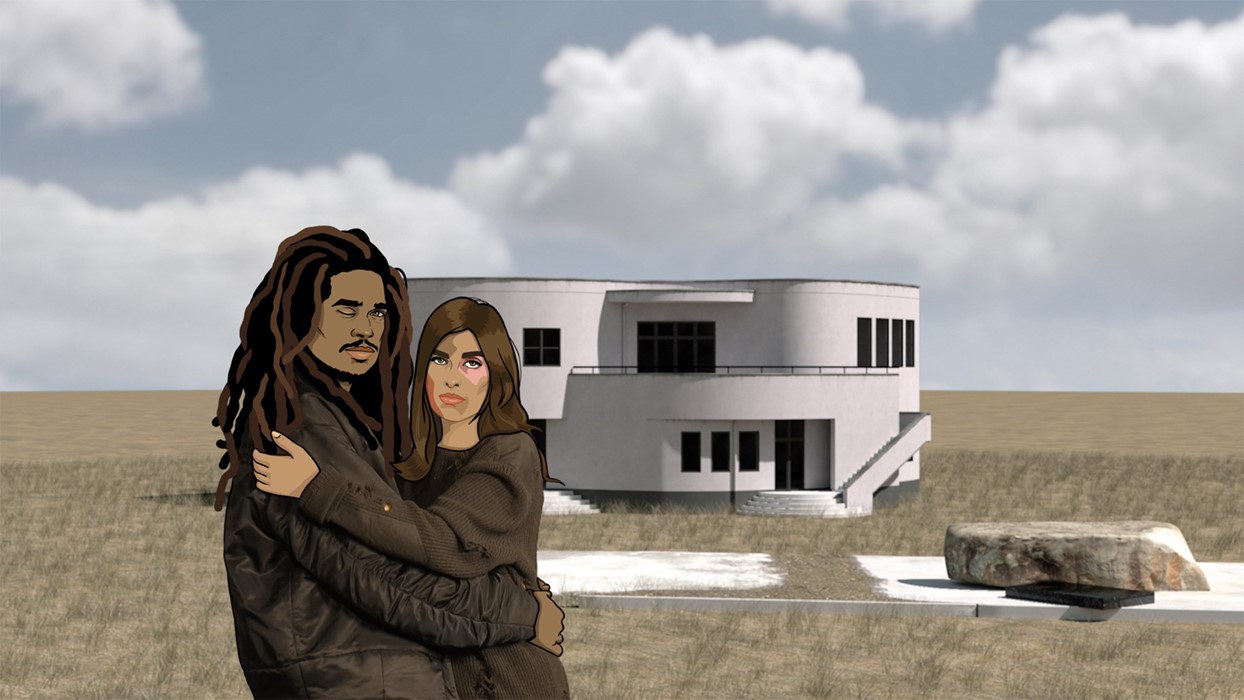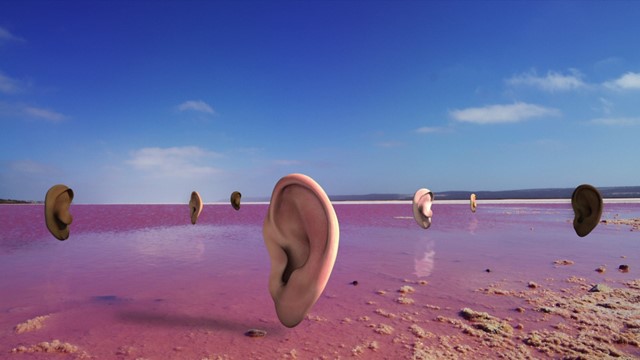In light of her nomination for the Jarman Awards and forthcoming show at Tate Liverpool, Francesca Gavin talks to the Belgian-American artist about her stimulating body of work
For Cécile B. Evans, there is no border or difference between life online and offline. The progressive artist’s practice covers many of the cultural tropes that embody contemporary life – our relationship to technological interfaces, the idea of identity in a changing digital landscape, and the pop cultural ephemera that makes up the everyday. This manifests as a variety of “hyperlinked” works that range from animated videos, sculptural objects, online spambot projects, digital prints and holograms. Evans is riding a wave right now – after her evocative installation, What the Heart Wants, at this year's Berlin Biennale, she's been shortlisted for this year’s Film London Jarman Awards and will stage a solo show at the Tate Liverpool late October. Sometimes her work centres on emotion – how we feel, how artificial intelligence attempts to feel. Sometimes her work returns to the idea of narrative – disjointed, interlinked, and moving in multiple directions like our post-screen thoughts. Below, in a rare interview, Evans casts light on her multifarious output.

Fran Gavin: The way you present your work grounds us in our physicality, which is an interesting contrast to a lot of your content, which seems to be about a kind of bodily-less-ness or an ephemeral physicality. Is that contrast intentional?
Cécile B. Evans: The installations and sculptures become a way to understand the viscerality and physical presence of the moving image, that digital information has a weight and takes up space. What can I do for people that walk into the space to nail home the proposition that nothing is immaterial? At the same time, I don’t get my body and I’m frustrated by its limitations. I don’t like that we’re going to die. The disembodiment of the characters comes directly from how frustrating those limitations are. The way they try to cope with their condition is an attempt to gain control, which is also related to probing how emotion (a kind of information) weighs so heavily on us. It's useful to consider these two materials – data and emotion – as physical to look at how they impact our lives.
What interests you about ideas of femininity and digital identity?
I have a potentially irrational adverse reaction to the word ‘feminine’… the role of gender appears in the work out of something practical rather than aesthetic. With a project like AGNES, it was an opportunity to strikethrough the trope of female AI as seductive and/or destructive – she does neither. With Hyper (the protagonist in What the Heart Wants), I wanted to present a non-sexualised female figure as the helm of a technology-driven world. The female digital body is a contentious thing. When I was making Hyper, there were specific references and sketches of a strong, leg heavy figure with asymmetrical breasts. In the first drafts, she came back with Lara Croft software presets, we had to engage in a conversation about stock bodies – which are overwhelmingly white, overwhelmingly large breasts-to-small hips ratio.
What draws you to pop references – such as your past references to pop songs by Paula Abdul or Sade?
The output definitely relates to the input – I consume a lot of pop culture. Making connections between pop and more historical or theoretical materials is a relief when dealing with human condition issues. I work with a brilliant pop songwriter, Mati Gavriel – I’ll bring him a few songs, or even a score or composition, and ask questions like ‘all of these are about leaving, this driving beat feels lonely but I’m excited?, this instrument… What do they have in common?’ It's built from there, he has an innate talent for understanding feelings within a structure.
"I have a potentially irrational adverse reaction to the word ‘feminine’… the role of gender appears in the work out of something practical rather than aesthetic" – Cécile B. Evans

What draws you to the structures of the internet?
Hyperlinked narratives. It’s the sensation of moving through subjects bound by associations that breed more subjects… it becomes impossible to follow. What’s left is more emotional: to live with or within a question. This feels like a more honest way to script the videos, rather than putting forward an obvious argument or objective. Roger Ebert once said about Godard’s Weekend (1967) “Everything makes sense, but nothing holds together…what’s going on? It’s as bad as life.”
Characters in your films are either unaware of their material state or frustrated by their state. Why?
There’s been a continued push, since Darwin, to define the universal. He was one of the first to classify emotion, a lot of affective computing is still based in his study. This is useful in a lab setting but unfortunately trickles into everyday tools designed by corporations. They’ve tried to make things more complex, more human, but this seems to have manifested itself in huge amounts of culled information becoming classified as a way to cull even ‘better’ data and creates an almost cannibalistic feedback loop of information. The characters are totally confused because their experience doesn’t line up with the data, it obscures their sense of purpose.

You’ve referred to outsourcing as an artistic method, which is an interesting idea...
For the renders and animations it’s like a surrogacy, I need to nest what I have in my head into their hands, my skill set becomes rooted in communication. Being engaged with people this way technically is super helpful creatively. I get to be an informed amateur. I don’t want to sound too precious, but when the content comes home for the edit there’s something great about it having ‘lived’ with other people.
This relationship (between myself and a world-spread network of people) became another moving image piece called Working on What the Heart Wants, which is a three-screen installation displaying live streamed content production, but also a chat simulation of our conversations.
So you completely dissected your process?
Hopefully opened up its reality a little bit? There’s a myth that the creative class is overwhelmingly WEIRD (white/western, educated, rich, democratic countries) – perpetuated broadly through marketing and development. One of my modellers is from Iran and now lives in Turkey, a location renderer in Columbia, a motion specialist in Brazil, the person who fixed Hyper’s hair is in Russia… If we’re really going to talk about globalisation you have to include the people who pull that in. It becomes an important layer in the work for me, definitely informs content and how I’ve come to value what digital labour is.

Cécile B. Evans, Sprung a Leak 2016, runs at Tate Liverpool from October 21, 2016 – March 19, 2017.
The winner of the Film London Jarman Award 2016 will be announced at the Whitechapel Gallery in London on November 28, 2016.
